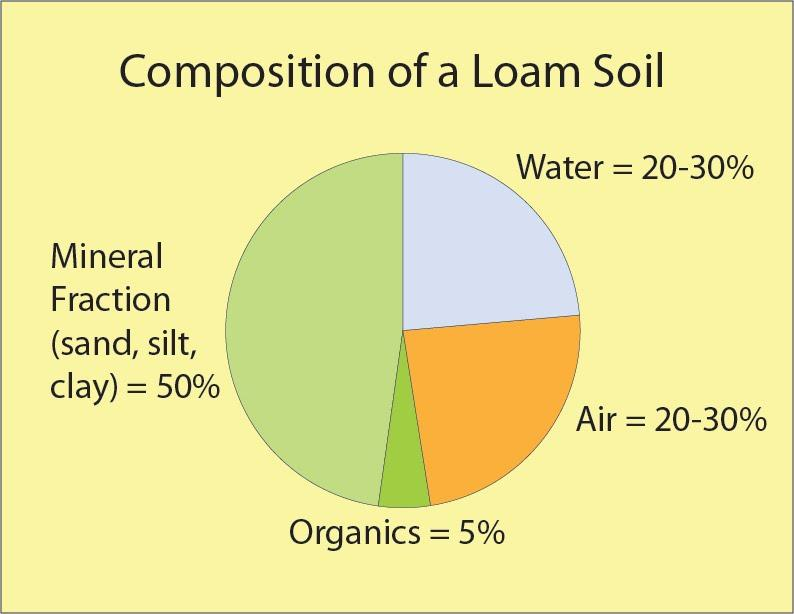
The best type of soil for agriculture is
A. Clay
B. Silt
C. Loam
D. Sand
Answer
575.1k+ views
Hint:A soil that is suitable for all kinds of crops can be broadly described as one which has good amount of porosity to permit proper aeration, good water retentivity, and proper pH which should be in the region of 6.5 to 7.5 and which has all the nutrients important for growth of the crops.
Complete answer:Among loam soil’s major three components—sand, silt, and clay—sand particles are the largest. Sand does not hold much moisture, but it provides good aeration and drainage due to the large size of the sand particles. Clay particles are much smaller and easily compact and this makes clay a great material for building bricks but evidently not so great for allowing water, air, and plant roots through it. Although, clay tends to be higher in nutrients than the other soil components.
Silt has the medium-sized particles, with better moisture retention property than sand but fewer nutrients than clay. Loam is considered to be the ideal garden soil. Its texture is porous, allowing water to flow through it slowly enough for the plants to absorb it but fast enough to avoid waterlogging.
Loam soil has a loose and crumbly texture allowing good aeration thus, allowing air to mix into the soil, which is essential for optimal growth of the crops. Loam is also extremely rich in nutrients.

So, the correct answer is C. Loam.
Note:Sand, clay, and silt are three major types of garden soils, each having its own pros and cons; loam soil is the perfect blend of all three types.
Complete answer:Among loam soil’s major three components—sand, silt, and clay—sand particles are the largest. Sand does not hold much moisture, but it provides good aeration and drainage due to the large size of the sand particles. Clay particles are much smaller and easily compact and this makes clay a great material for building bricks but evidently not so great for allowing water, air, and plant roots through it. Although, clay tends to be higher in nutrients than the other soil components.
Silt has the medium-sized particles, with better moisture retention property than sand but fewer nutrients than clay. Loam is considered to be the ideal garden soil. Its texture is porous, allowing water to flow through it slowly enough for the plants to absorb it but fast enough to avoid waterlogging.
Loam soil has a loose and crumbly texture allowing good aeration thus, allowing air to mix into the soil, which is essential for optimal growth of the crops. Loam is also extremely rich in nutrients.

So, the correct answer is C. Loam.
Note:Sand, clay, and silt are three major types of garden soils, each having its own pros and cons; loam soil is the perfect blend of all three types.
Recently Updated Pages
Master Class 12 Social Science: Engaging Questions & Answers for Success

Master Class 12 Physics: Engaging Questions & Answers for Success

Master Class 12 Maths: Engaging Questions & Answers for Success

Master Class 12 Economics: Engaging Questions & Answers for Success

Master Class 12 Chemistry: Engaging Questions & Answers for Success

Master Class 12 Business Studies: Engaging Questions & Answers for Success

Trending doubts
What are the major means of transport Explain each class 12 social science CBSE

Which are the Top 10 Largest Countries of the World?

Draw a labelled sketch of the human eye class 12 physics CBSE

How much time does it take to bleed after eating p class 12 biology CBSE

Explain sex determination in humans with line diag class 12 biology CBSE

Explain sex determination in humans with the help of class 12 biology CBSE




